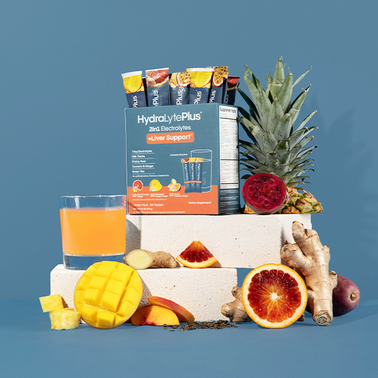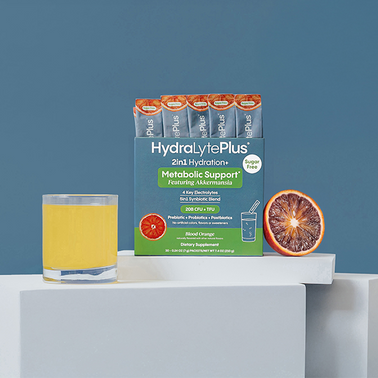What is the Keto Diet
Although there are many variants of the keto diet that have emerged, the standard keto diet is pretty simple. As a rule of thumb, eat very little carbohydrate: less than 50 grams of carbs per day, a lot of fat and just enough protein. The goal is to switch from burning carbohydrates as a fuel source to utilizing fat. You can jump all in with immediate carbohydrate restriction, or take it gradually, by eating less and less carbohydrate every day until you are consuming less than 50 grams. The jump-all-in option will get you to a state of ketosis faster, but may also lead to what has been coined the dreaded “keto flu”.
Keto Flu: Symptoms
In the first 1-4 weeks of implementing the keto diet you may experience these keto flu symptoms:
- Fatigue
- Nausea
- Bad Breath
- Intestinal discomfort, like constipation and diarrhea
- Headaches
- Brain fog
- Dizziness
- Muscle soreness
Keto flu symptoms are thought to be related to the significant decrease in carbohydrates which rapidly sheds water weight. This rapid loss of water and glycogen can lead to dehydration. The keto diet can also have a diuretic effect leading to further water loss and an imbalance in electrolytes.
How to Recover From the Keto Flu
Although we cannot provide a keto flu cure, we can provide you with you some tips to prevent and lessen the impact of keto flu symptoms. It’s important to stay hydrated by drinking plenty of water and fluids with electrolytes, like an oral rehydration solution, to replenish sodium, potassium, calcium, and magnesium. Electrolytes are needed to balance the amount of water in your body, moving nutrients into and removing waste out of your cells, the overall functioning of your muscles, heart, brain, and virtually every other organ.
- Hydrate
Stay well hydrated by drinking plenty of water and fluids with electrolytes (sodium, potassium, calcium, magnesium) such as an oral rehydration solution.
- Keto-friendly foods
Include a variety of keto-friendly foods high in electrolytes such as green leafy vegetables, avocado, berries, rhubarb, and nuts and seeds.
- Consider modifying your exercise routine
It may be wise to take it easy in the first couple of weeks while the body is adapting from carbs to fats as your source of fuel. Once you have fat-adapted, you will most likely be able to get back to your HIIT and sprints over the coming weeks.
- Sleep
During the initial phase of the ketogenic diet, flu-like symptoms such as achy muscles and headache can leave you tossing and turning making it nearly impossible to fall asleep. Luckily, this is usually short term. Adjusting your initial rate of carb-cutting may help decrease these symptoms. A substantial drop in carbs leads to significant water loss, meaning you are heading to bed in a dehydrated state. Plus, adding high fat and high fibre to your diet too quickly can lead to significant bloating and even diarrhea—which also results in more water loss. Proper hydration helps control your internal body temperature, keeping it cool over night. Finally, part of your sleep disruption could simply be that you are hungry! Planning your meals and snacks and adjusting when you have them can help limit these symptoms so you can get a restful night’s sleep.
- Gradual or Quick Fix
Consider the right pace for you. Dropping down to 20g of carbs on day one may be too severe of a drop too soon. Start gradually, with 80g then 50g then 20g of carbs daily or until you reach your daily carb goal. In both cases, you will eventually reach ketosis.
Is Hydralyte Keto Friendly?
Hydralyte is an oral rehydration solution scientifically designed for rapid rehydration, making it the ideal addition to staying hydrated on the ketogenic diet. There are just 5g of carbohydrate in a 200ml single serving of Hydralyte, making this beverage keto-friendly. Plus, Hydralyte All-Natural Electrolyte Sticks contain no artificial colors, flavors or sweeteners.
The Bottom Line
The keto flu is very real for many who begin the ketogenic diet. It is critical to manage symptoms while the body is going through the adaptation process. Dehydration, constipation, and diarrhea are symptoms that require particular attention. Whether you choose to take a gradual or fast drop in your carbs, staying hydrated by replacing water and electrolyte loss is a must. .
Jorie Janzen, Performance Dietitian and Health & Wellness Life Coach
Jorie Janzen received her undergrad degree at the University of Manitoba and furthered her education with the prestigious 2 year International Olympic Committee Diploma in Sport Nutrition and is a Life Coach. Jorie is also one of 19 dietitians in Canada designated as a Board Certified Specialist in Sports Dietetics. Over the past 18 years she has gained extensive experience working with provincial, national, Olympic/Para-Olympic level athletes, the Winnipeg Jets, Royal Winnipeg Ballet, Faculty of Family Medicine, and Legacy and Pan Am Sport Medicine Fellowships. The past 10 years she has been working with the Canadian Sport Centre Manitoba as Director of Sport Dietetics and holds a private practice working with athletes, eating disorders and corporate health and wellness.










